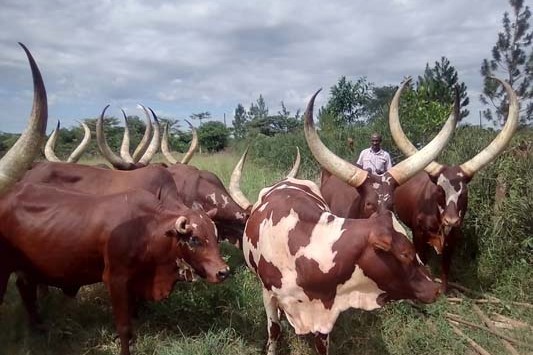By ANNE LEE
Five years after theileria found its way into the Top of the South, cow immunity and management have proven to be the best line of defence.
Ali Gray from the Rural Service Centre’s Vet Clinic in Golden Bay says a thriving tick population and the perfect climate meant there was little surprise when theileria found its way to the region.
Ticks thrive in moist, warm climates such as Golden Bay and nearby Rai Valley which were hit hard by theileria, a microscopic blood-borne parasite transmitted by the cattle tick. The parasite damages the red blood cells and causes anaemia in cattle which can sometimes be fatal.
When theileria first arrived in the region and herds had absolutely no immunity, Ali says there were farmers losing two to three cows a day. Blood transfusions were common, often using carryover cows to source the blood for the affected cow with the aim of replacing the red blood cells destroyed by theileria. At its peak, some farmers were doing blood transfusions on 40 to 50 cows a season.
After the initial explosion of theileria, numbers have settled as immunity increases in herds, though Ali says there’s still the problem with naïve animals in the herd including young stock. Ideally, stock are best exposed to theileria at times of least stress, such as autumn, because if they get it in spring when they are calving and the weather turns foul, then the effect is likely to be more severe.
Generally, the closer the cow to calving, the more severe the anaemia, she says. When an infestation of theileria attacks red blood cells, the red blood cell count can drop dramatically and fast.
“Farmers get good at picking the affected cows because they are at the back and puffing,” she says. “They can open a gate and quietly put them in there.“
The only drug available, Buparvaquone, has a long withholding period, so instead, farmers use supportive treatment for those cows showing signs of anaemia. That includes B12 injections as a ‘pick-me-up’ to encourage the cow to eat and some farmers cover those cows to lessen any extra stress.
Minimising stress in the herd including running the milking heifers separately is part of the theileria strategy for a contract milking couple in the Rai Valley.
Mark Ring and Sarah Hope are milking 600 cows on Malcolm and Caroline Berkett’s farm beside the tiny township, halfway between Nelson and Blenheim. They first discovered theileria in the heifers after more cows entered the herd.
A heifer became sick and went downhill fast after calving and then died when a storm added more stress. Another heifer was milking fine one day and dead the next. Others, mainly heifers, were affected by the disease, with 15 going on to slip their calves. But they consider they got off lightly compared to some farmers.
Random blood testing showed theileria was widespread in the herd, but many showed no symptoms. They wonder if that was due to a drought the previous season that prompted them to put the herd on once-a-day (OAD) milking which led to the cows being in better condition and then less stress through the following calving.
Once they found theileria in the herd, they attacked the tick population with a pour-on tickicide just after calving, another just before mating and then a third pour-on halfway through mating. They again applied a pour-on across the herd in early autumn to reduce tick numbers.
The following season, they put the heifers on to OAD to minimise pressure on them and any affected by theileria were separated into paddocks by themselves and given all the feed they wanted, as well as an anti-inflammatory.
“We’re just trying to minimise the stress on animals at different times of year,” Mark says. “And keeping the heifers separate through their first season reduces stress.”
This season they have had no problems with theileria, despite being a wet season and they aren’t sure how much of that is due to increasing immunity within the herd and how much is due to reduced stress and targeting the ticks.
They will continue using a pour-on to keep tick numbers down, especially because it is a wet season. It’s an extra animal health cost but may help manage the timing of theileria.
“They can then get exposed to it in periods of less stress and when there’s less impact on milk,” Mark suggests.
Though they started the heifers on twice-a-day milking this season, they will drop them to OAD if the season throws weather that adds stress.
An additional 30 cows are in the herd this season as a back up to replace any cows that get sick from theileria. They have been able to bring cows with theileria back into the milking herd as long as 10 days after they were removed, but Sarah says they don’t produce as much milk after their illness.
In subsequent years they plan to drop cow numbers back to their usual 570 on the 220ha milking platform so they can ensure they have the ability to feed them well and reduce stress.
Also to reduce stress, cows are either milked just once a day or left in the paddock and Ali says it is not uncommon for cows to be a week or more without milking while they are recovering from theileria, then brought back into the milking herd. That depends on what stage of the season the cow gets the disease and whether she will continue milk production.
One of the best ways to diagnose theileria early so the cow can be looked after for a better outcome, is to check cows’ vulvas at milking time. A pale or yellow vulva, rather than healthy pink, is a sure sign something is wrong and it is an easy check because the cows are being milked every day.
Tick control can lessen, though not eradicate, the tick population. Bayticol can be used on lactating cows and when the disease was at its worst in the region, she says farmers were using it across the entire herd to delay theileria onset through calving.
As stress increases, so does the severity of the disease, which is why cows in good condition cope better than cows with the added stress of poor condition.
“Having cows in good condition means a good immune system so they can cope with it better than an animal that is lighter at calving time and calving in the middle of a storm.”
She says farmers talk about closed herds as a means of keeping the disease at bay, but there is still a “stack of stock movement” that goes on and theileria doesn’t spread between animals, but rather via the ticks on the farm.
FarmWise consultant Brent Boyce has worked with farmers in the Top of the South who have had to deal with theileria in the herd and he says a tickicide is especially useful through calving and mating to stop the tick spreading the disease through the herd.
He says the best time for the herd to get theileria – and then be clear of it – is after Christmas. Hopefully, the young stock also get the disease and become immune before they head into their first mating and then their first calving.
WHAT TO LOOK FOR
- Signs of anaemia such as pale or yellow mucous membranes on gums, vulva and whites of the eyes, rather than healthy pink
- Depression
- Lethargy – cows lagging behind the herd
- Lack of appetite
- Decrease in milk production
MOST LIKELY TO OCCUR
- Around calving time
- Weaned calves
- Mating time
- Animals with other health or stress challenges
TREATMENT
- Supportive treatment to limit stress
- Once-a-day milking or left in paddock with feed
- B12 injections
- Some farmers cover cows
- Blood transfusions for severe cases





